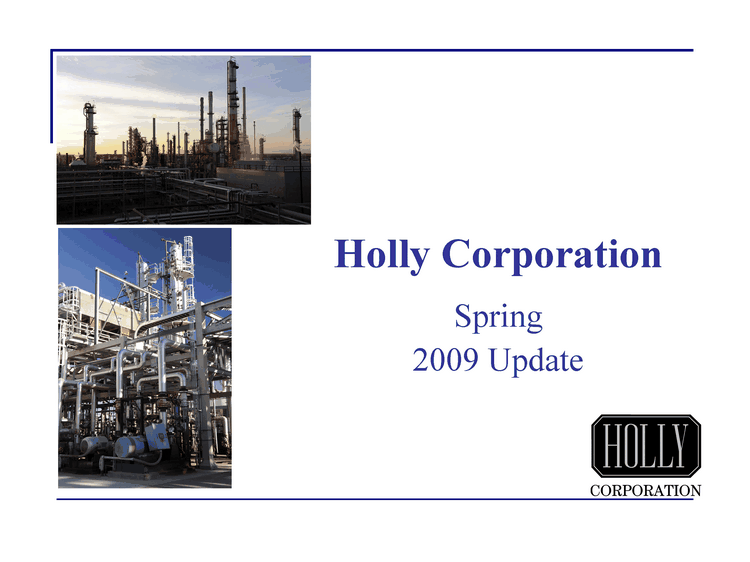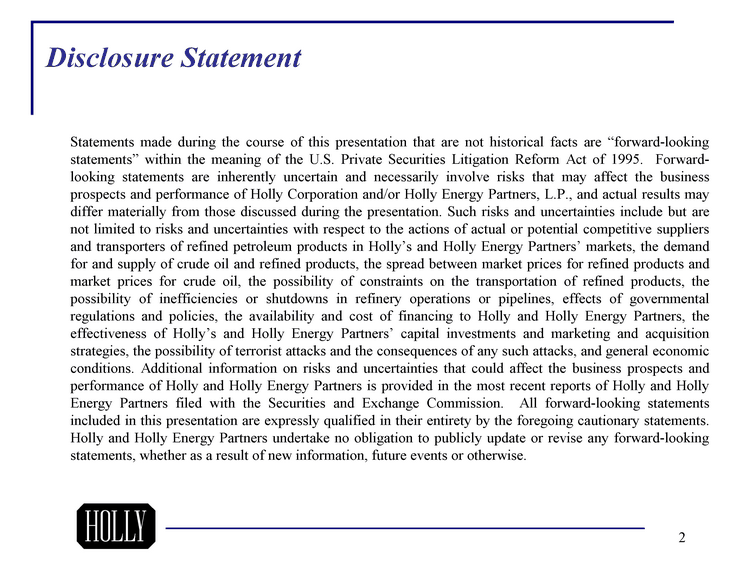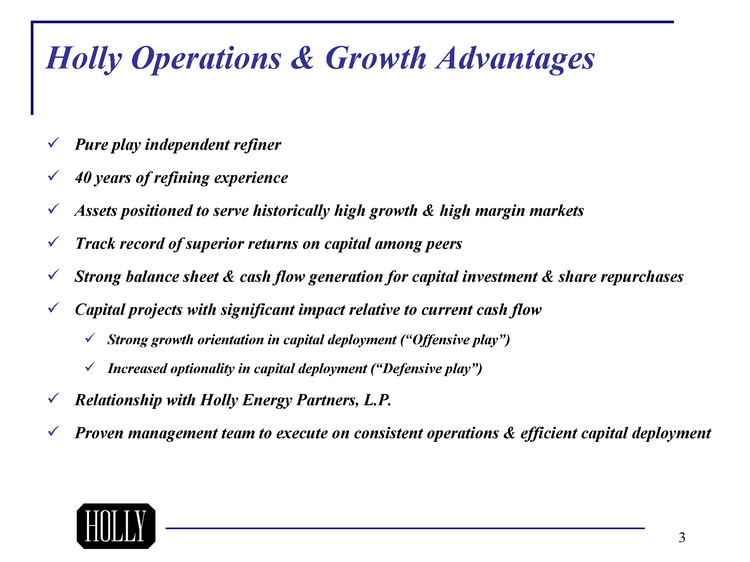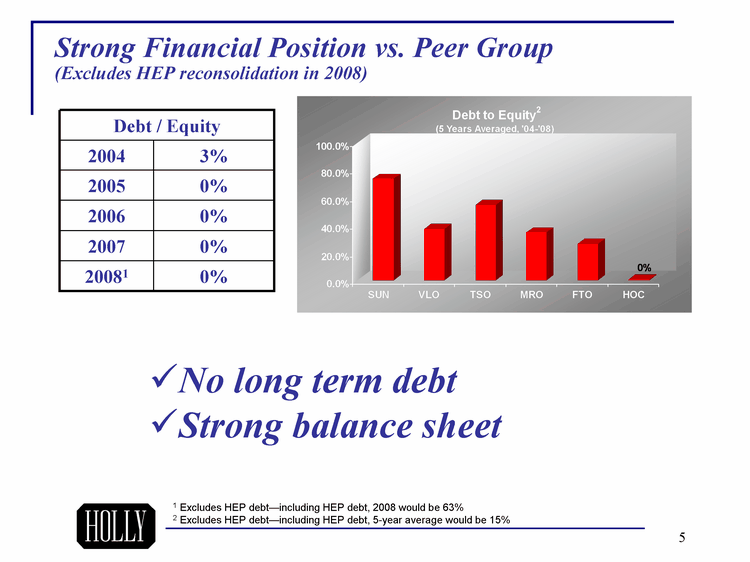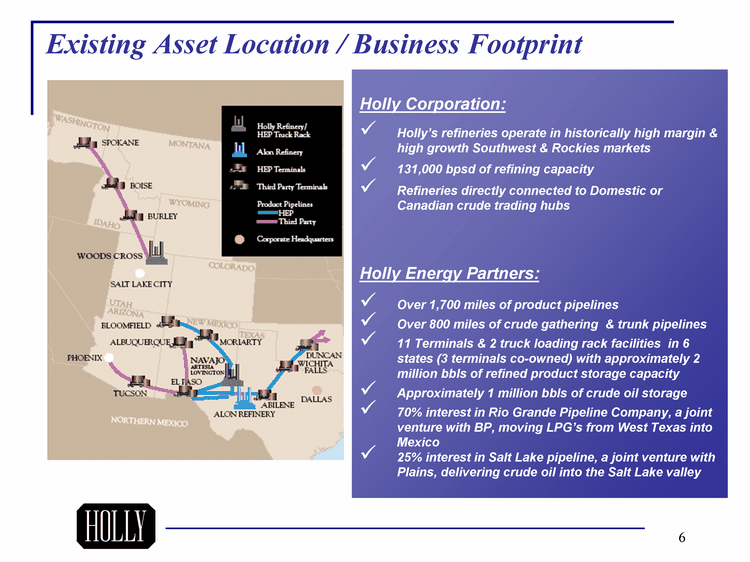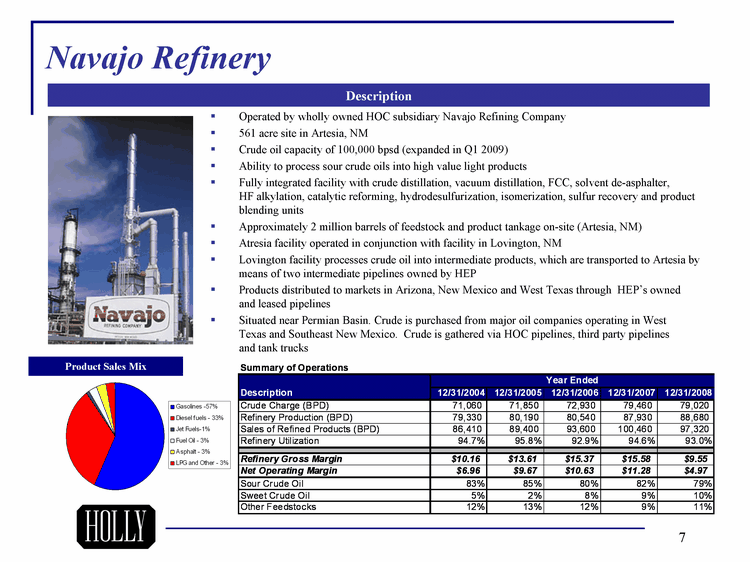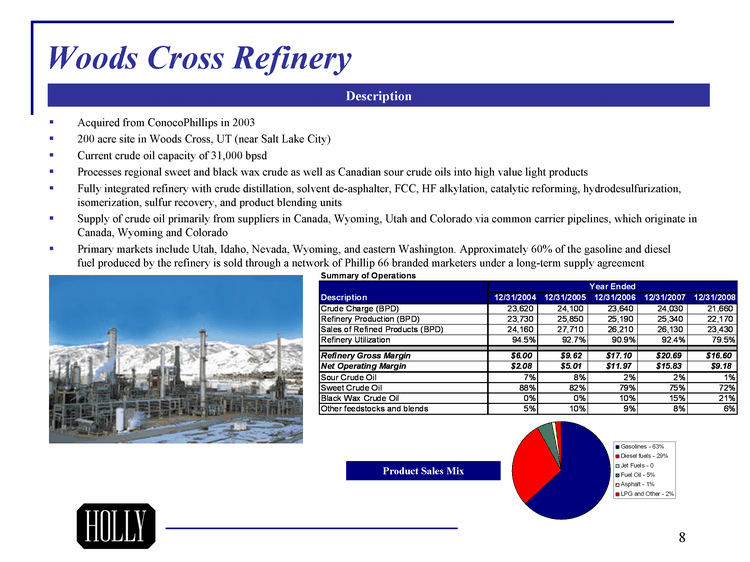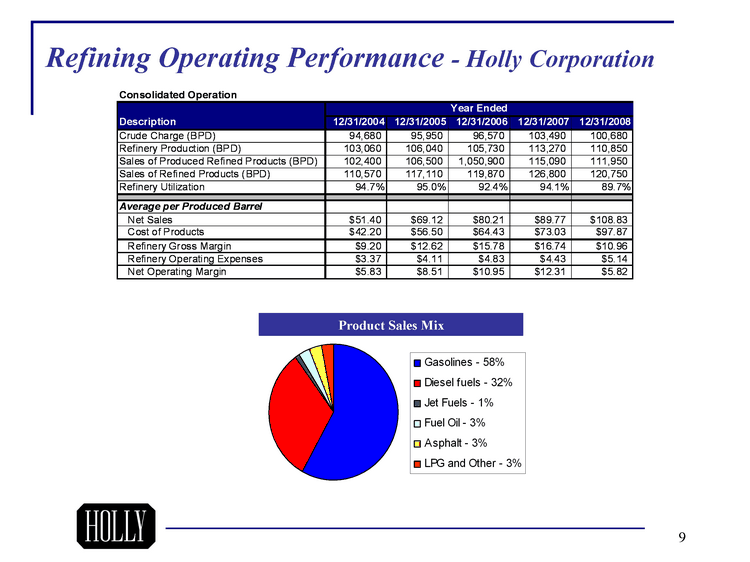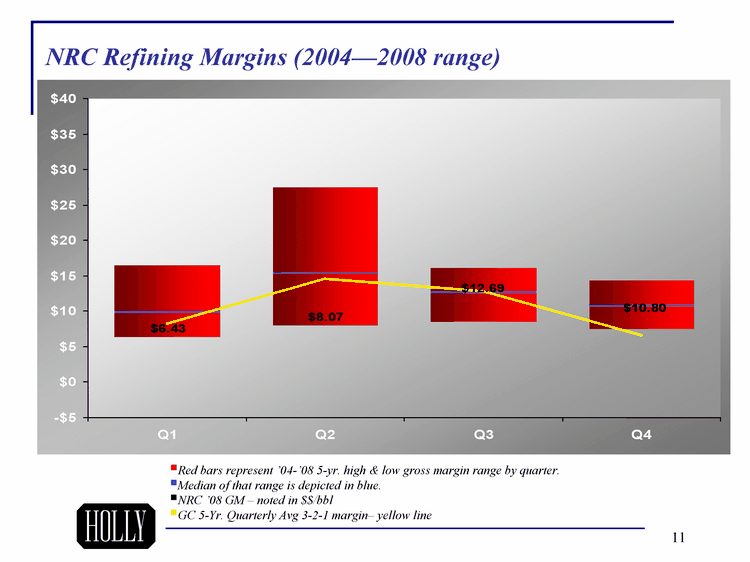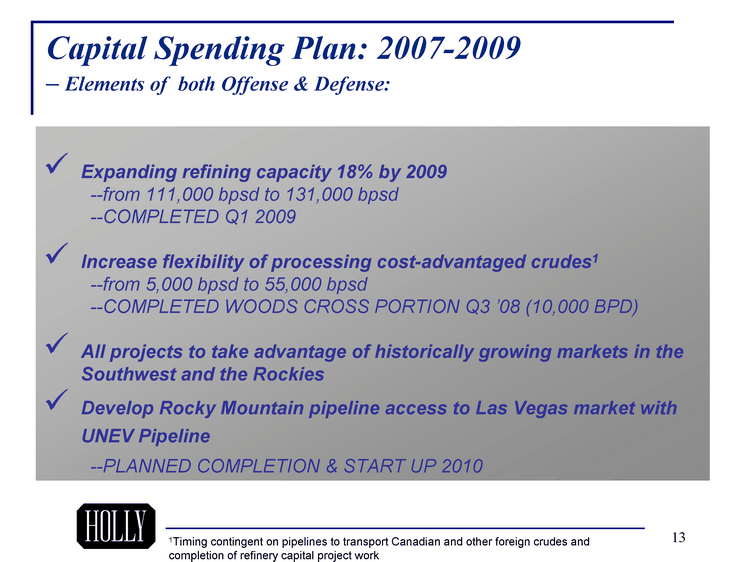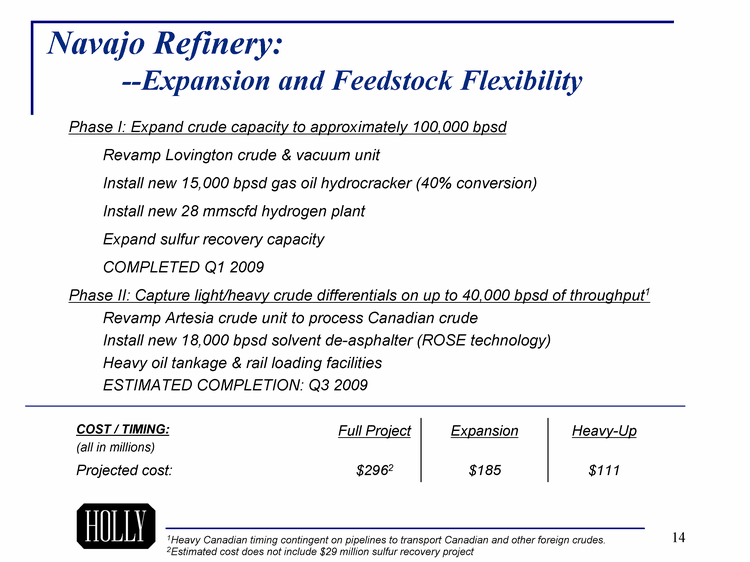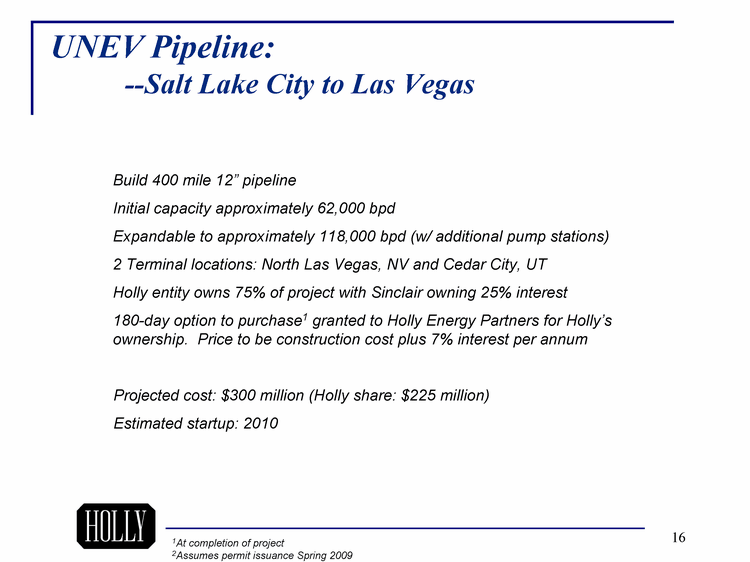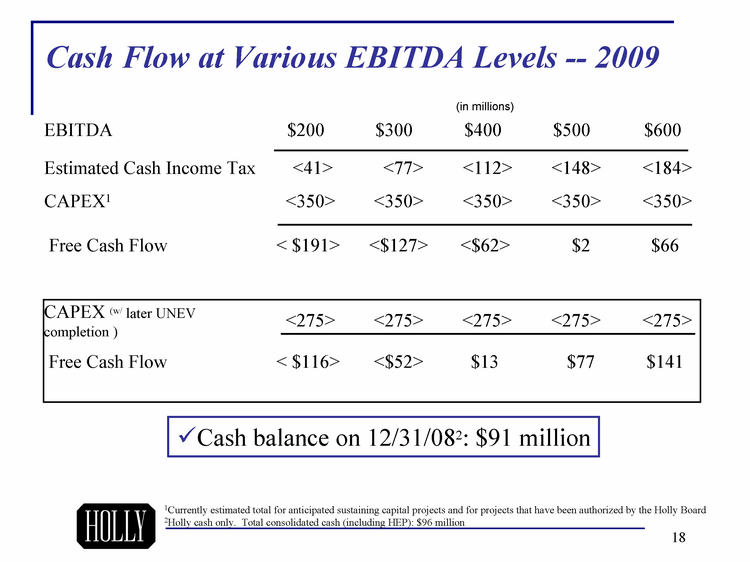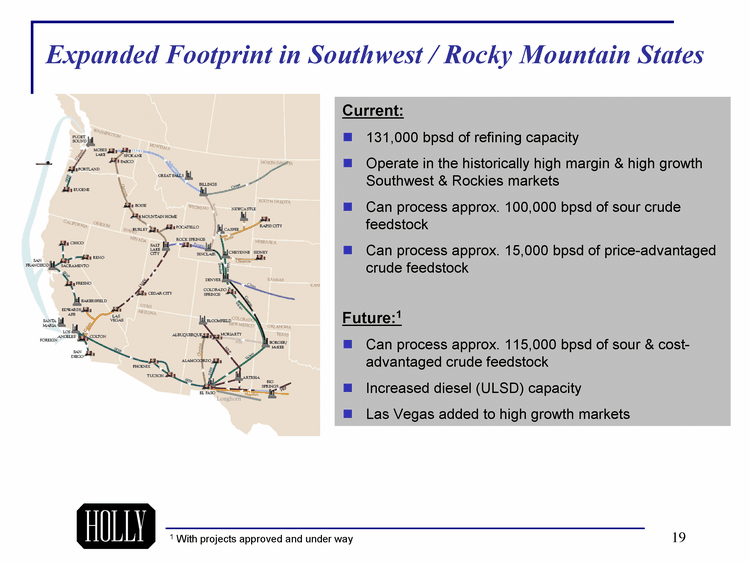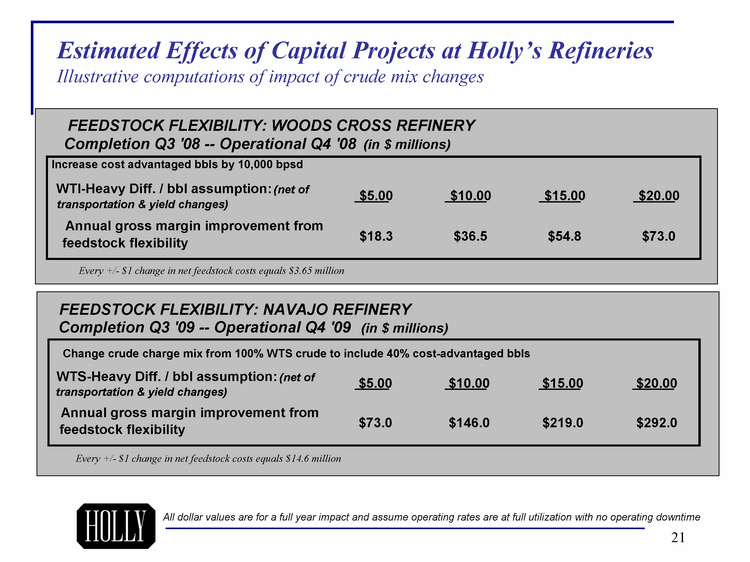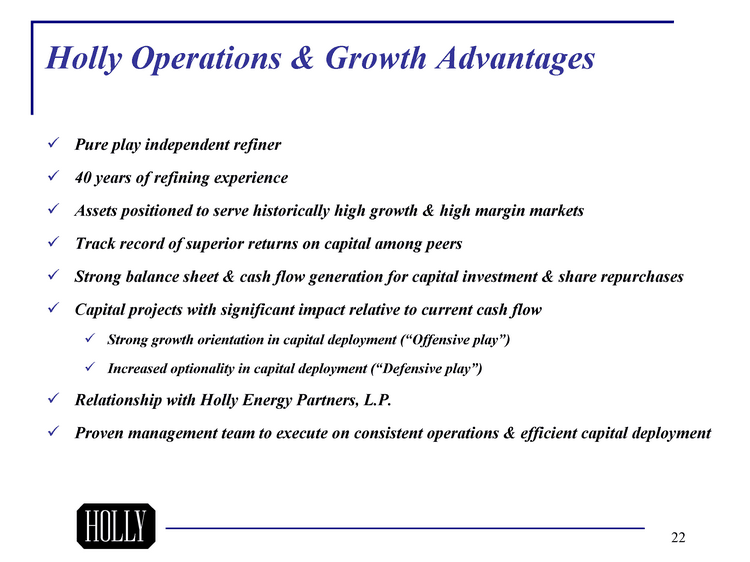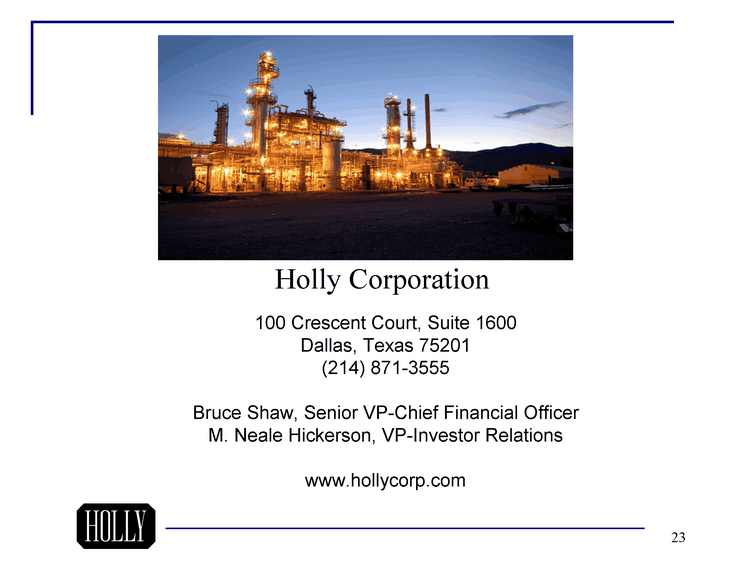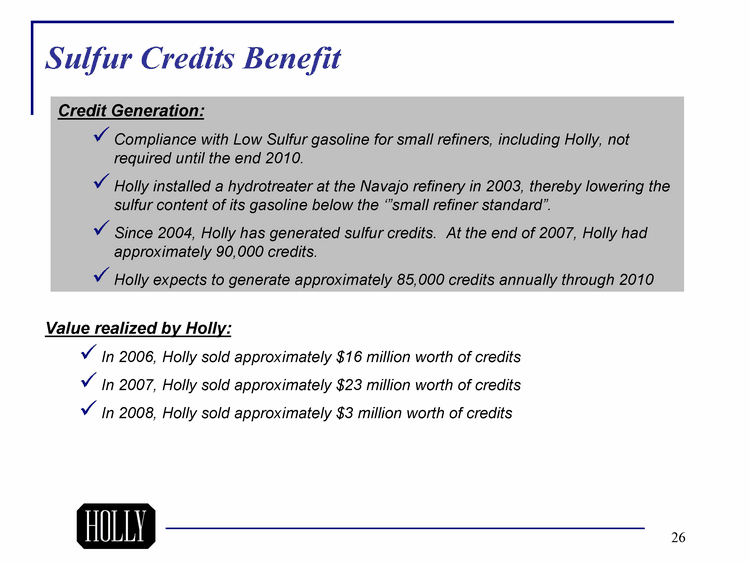Free signup for more
- Track your favorite companies
- Receive email alerts for new filings
- Personalized dashboard of news and more
- Access all data and search results
Filing tables
HF Sinclair similar filings
- 16 Apr 09 Entry into a Material Definitive Agreement
- 16 Apr 09 Holly Corporation Announces Definitive Agreement to Acquire Sunoco’s Tulsa Refinery
- 13 Apr 09 Entry into a Material Definitive Agreement
- 12 Mar 09 Regulation FD Disclosure
- 17 Feb 09 Holly Corporation Reports Fourth Quarter and Full Year 2008 Results
- 16 Jan 09 Departure of Directors or Principal Officers
- 7 Jan 09 Departure of Directors or Principal Officers
Filing view
External links
